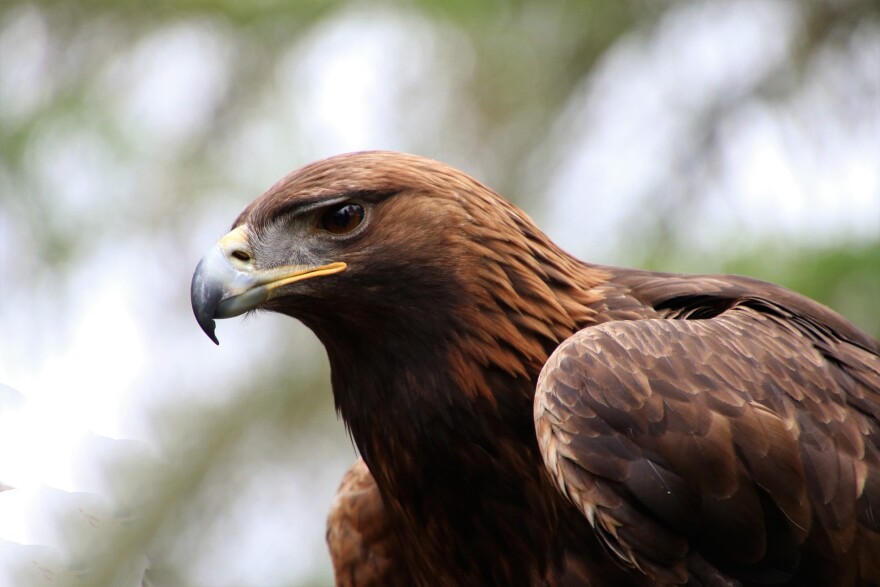The sky of west-central Montana turns into a highway for migrating golden eagles this time of year. And as the birds fly south, researchers are counting. Local researchers say annual counts show North America’s largest bird of prey’s migratory population is struggling in Montana.
We’re crouching in a camouflaged hut atop Rogers Pass. It’s cold, with gusty winds and several inches of snow on the ground.
Rob Domenech, executive director of Missoula’s Raptor View Research Institute, grabs his binoculars. He and other field biologists are trying to spot eagles. It’s their last count of the season and all are staring intently across the valley.
Migration monitoring helps scientists get a population count on the birds, who usually nest in remote northern locations and are hard to study during other times of the year.
"What we do is just scan these hillsides constantly," Domenech says. "These guys are scanning up there, we have radios, if they see something they’ll let us know."
Decades of migration counts of the birds above Montana indicate that the golden eagles that travel have declined here.
Domenech and others spend weeks on ridge lines this time of year trapping and banding birds, outfitting them with tracking tags and collecting data. This helps them monitor trends and follow migration paths. Not unlike a puppeteer, Domenech pulls strings to manipulate a pigeon outside the hut in hopes of catching a bigger bird’s eye.
"Now we’ll just do some periodic luring and hopefully in about five minutes it’s here," he says.
Hawk Watch International data from a Bozeman research site measured roughly 650 golden eagles per 100 hours of counting in the early 1990s. In 2018, the number of birds researchers counted was less than half that.
"It’s those migratory populations that are throwing up a red flag to researchers and conservationists," Domenech said, speaking on the phone before the counting trip.

Are the birds dying during migration? Are they not not migrating as far south as they used to?
"What exactly is going on is hard to say. And that’s part of what we’re trying to figure out with our telemetry work."
Golden and bald eagles are protected under federal law and people face fines and potential jail time for killing, wounding, or disturbing the birds.
Researchers say migrating golden eagles face a unique set of challenges that include habitat loss, car collisions, power line electrocutions, wind turbines, traps and lead poisoning, to name a few. The birds come from as far north as the Brooks Range in Alaska and tagged birds have wintered as far south as Mexico.
While some Montana researchers say they’re seeing a decline in eagle numbers, other available research from across the West shows the non-migratory population is more stable. The 55th parallel delineates the two populations, with those that breed in harsher northern climates needing to migrate to follow food sources. This potentially puts them in more danger.
Some recent reports indicate researchers may have reason to believe the bird’s dipping migration numbers are stabilizing in Montana. A Hawk Watch report from 2016 says recent counts give "reason for some optimism," with the highest number of golden eagles tallied in the region since 1998.
Missoula’s Rob Domenech and his team will add this year’s bird watching data to the picture soon. Domenech says a healthy golden eagle population often means a healthy ecosystem, or vice versa.
"So what’s happening with golden eagles could be in fact indicative of the ecosystem as a whole. They are sort of the canary in the coal mine of ecosystem health, let’s say."
Counting time is coming to a close. While the team wasn’t able to catch a golden eagle on the last day of the 2019 season, they did count 15, and managed to trap a goshawk. The field biologists quickly banded the bird.
Researchers are packing up their work site before snow makes it inaccessible. It’s too soon to tell if the migratory golden eagle decline in Montana has stabilized for good. But scientists are working to learn what they can from the birds soaring overhead.

